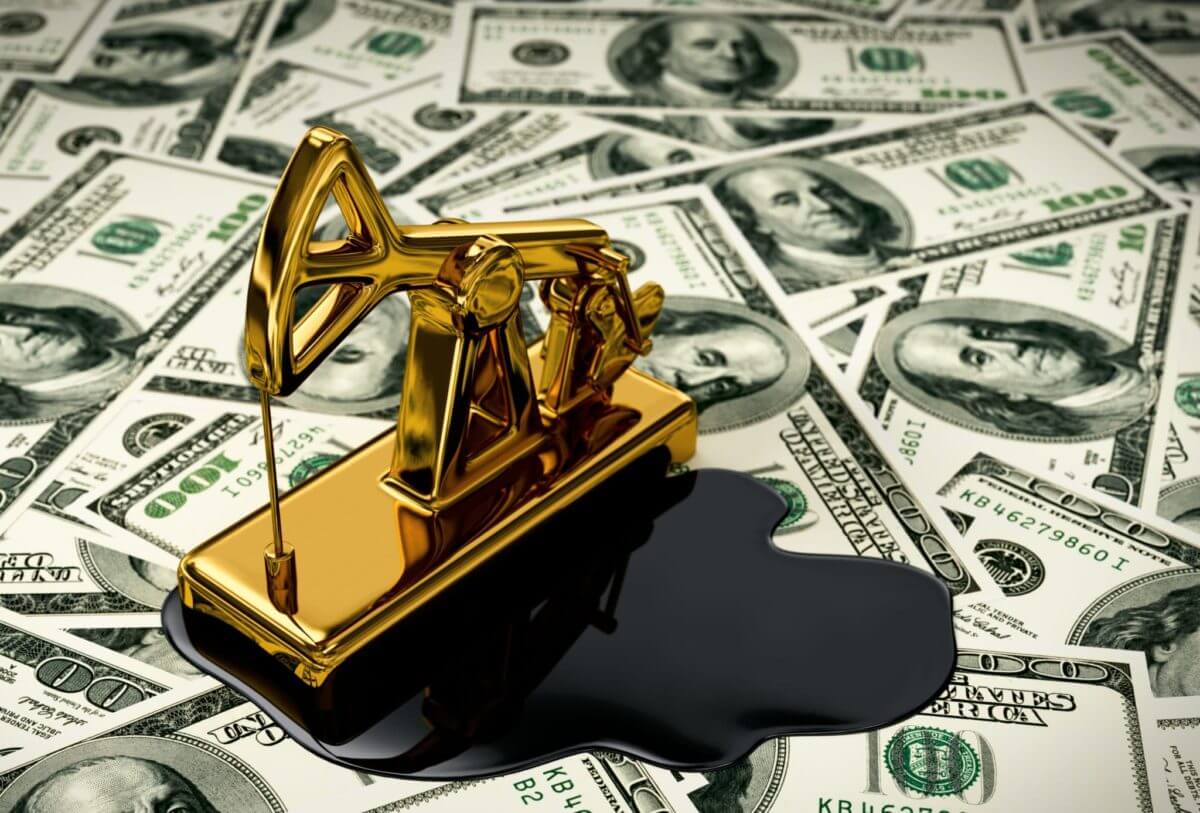
Gold and silver in complicated zones, bullish coffee
Highlights:
- ENERGY:
Brent crude dropped by 0.4% 32 cents while WTI lost 0.4% or 27 cents.
Natural gas contracts for August delivery closed at $4.003, the biggest increase since 2018. - METALS:
Gold lost 0.06% to $1,804.35 due to the fall in bond yields. Silver Silver was trading with a loss of 1.2%. Meanwhile, copper advanced by 1.6%. - AGRICULTURAL:
The price of coffee surged by 10%, highest in 7 years.
Oil falls but accumulates increases in a week
Crude oil deepened its decline below $74 a barrel on Friday. However, it was on track to end the week a little changed after an unexpected recovery from Monday’s slump, supported by expectations that the supply remains tight as demand recovers.
The price of crude oil and other risky assets plummeted at the beginning of the week due to concerns about the increase of the Delta variant of COVID-19 in the United States, United Kingdom, Japan and other parts of the world.
Brent crude dropped by 0.4% or 32 cents, to $71.91 a barrel, after climbing by 4.2% in the previous session. WTI crude slumped by 0.4% or 27 cents, to $70.03 a barrel, after adding 4.6% on Wednesday.
Analysts believe that oil bulls are back. However, concerns about the coronavirus have not disappeared completely.
Brent was heading to close the week with a marginal increase of 0.2% after accumulating losses in the previous three weeks. The WTI was about to end the stable week.
Both contracts fell about 7% on Monday but have already picked up that decline. Investors hoped that demand would remain strong and the market would be supported by declining oil stocks and rising oil rates.
Natural gas hit 2018 highs
Natural gas prices are soaring worldwide since hot weather conditions create demand for electricity to run air conditioners.
The commodity futures surged to $4 per million British thermal units in the United States for the first time since December 2018.
Gas for August delivery closed at $4.003, which is the highest closing price in 31 months.
The market is worried about tight supply at the end of the following winter. It’s the period of the year when gas consumption peaks. Stockpiles are already below normal, and production growth has been restrained. Exports also contribute to the tightening of the inventories. In May, for the first time, the US exports exceeded Australia’s.
Gold prices fall, headed for a weekly decline
After recovering from losses reached during the previous session, gold dropped again. The yellow metal yielded 0.06% to $1,804.35. It resulted from the decline in US bond yields and US economic data, which was weaker than expected. Lower interest rates in the United States reduce the opportunity cost of holding bullion, which does not generate interest.
Over the past week, gold lost 0.2% after registering gains for the previous four weeks.
The market’s focus now goes to the Fed meeting next week for more signs on monetary policy. On Thursday, the European Central Bank promised to keep interest rates at record lows for some time.
Silver prices dropped. Will they resume their fall?

Copper price rises after China releases fewer reserves than anticipated
Copper prices increased on Thursday. It resulted from China’s decision to release fewer reserves of metals than expected.
September copper delivery advanced by 1.6%, reaching $4.343 per pound. Meanwhile, August copper contract delivery on Shanghai Futures Exchange added 0.8% to 68,740 yuan a tonne.
Anna Stablum, a commodities broker at Marex Spectron, stated that Chinese metal sales are less than the market expectations, and it will obviously reflect on prices.
China made the second sale this month since the government tries to control commodity prices.
Coffee registers the biggest increase in 7 years
The price of coffee surged by 10% in New York this Thursday. It’s been the highest rise since the beginning of 2014, affected by droughts and frosts that threaten coffee plantations in Brazil.
During the July season, coffee plants flourish and are at a vulnerable period, which is expected. However, the worst market fears have come true this year.
With temperatures below zero, an unusual cold wave has hit the heart of the coffee zone of Brazil this week. It is likely to affect next year’s harvest significantly.
In addition, Brazilian producers recently warned of one of the most significant production drops in two decades due to low rainfall.
Coffee futures contracts for September delivery rose by 17.7 cents, to settle at $1.94 per pound. In the last month, it has been a rise of more than 21%.
On July 12, the US Department of Agriculture warned of a significant rise in prices due to poor harvests and increased demand. It also warned about the possibility of affecting consumers internationally.


